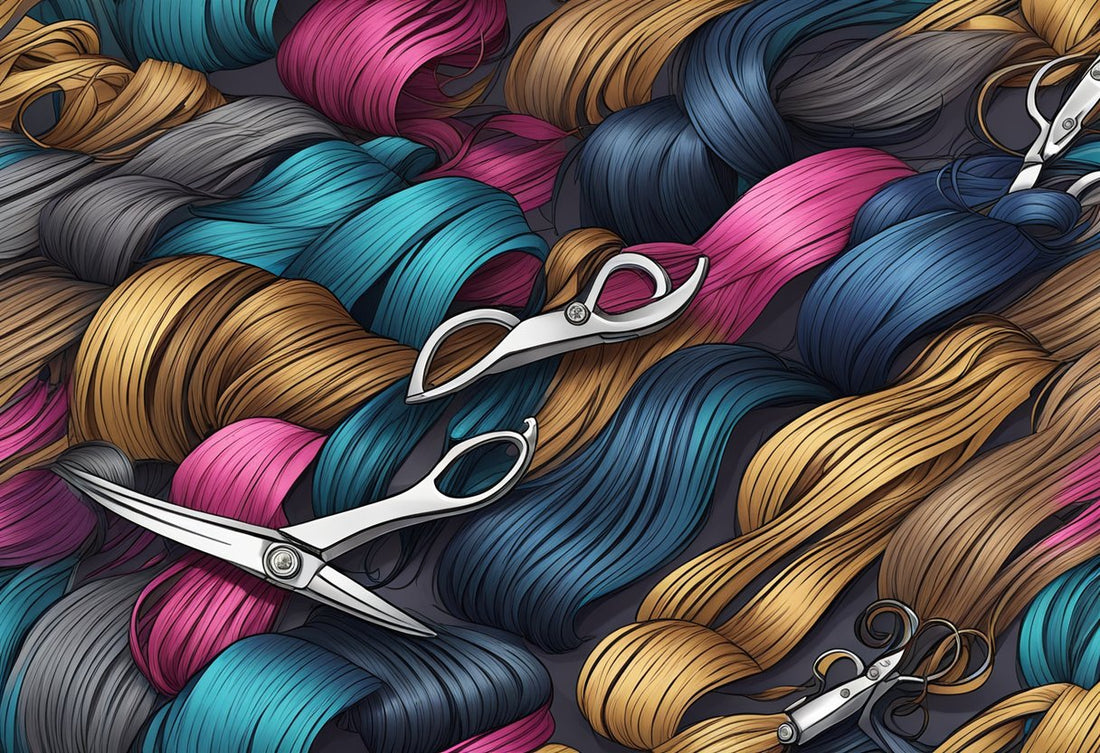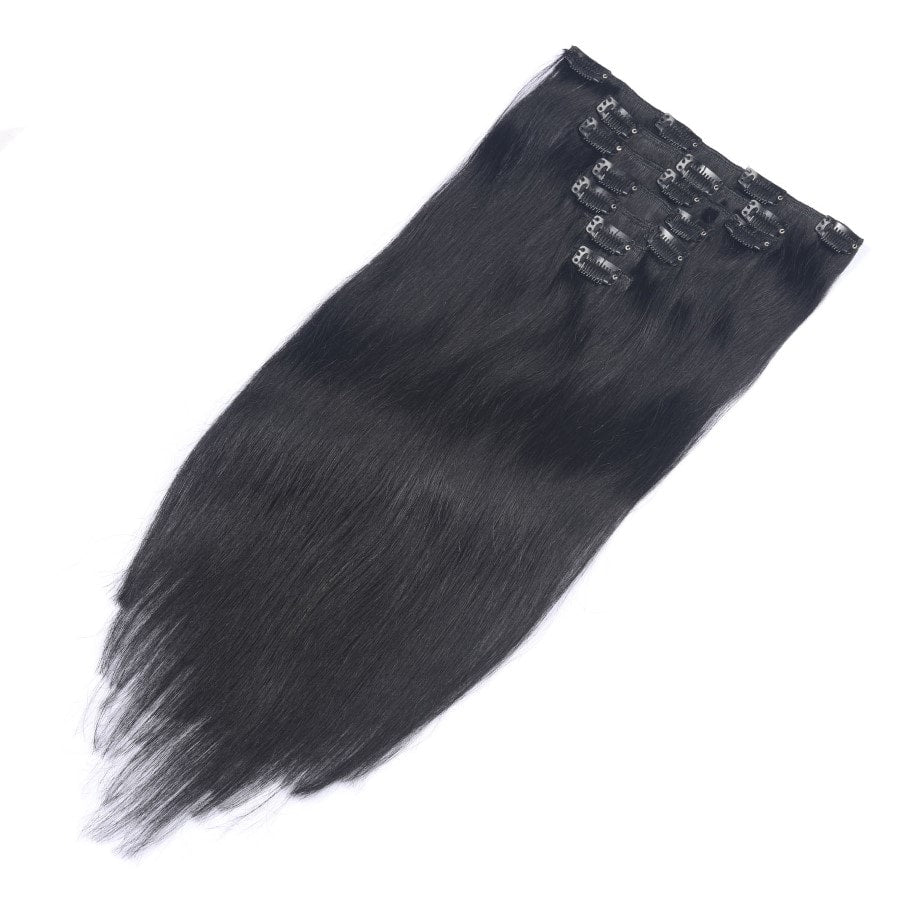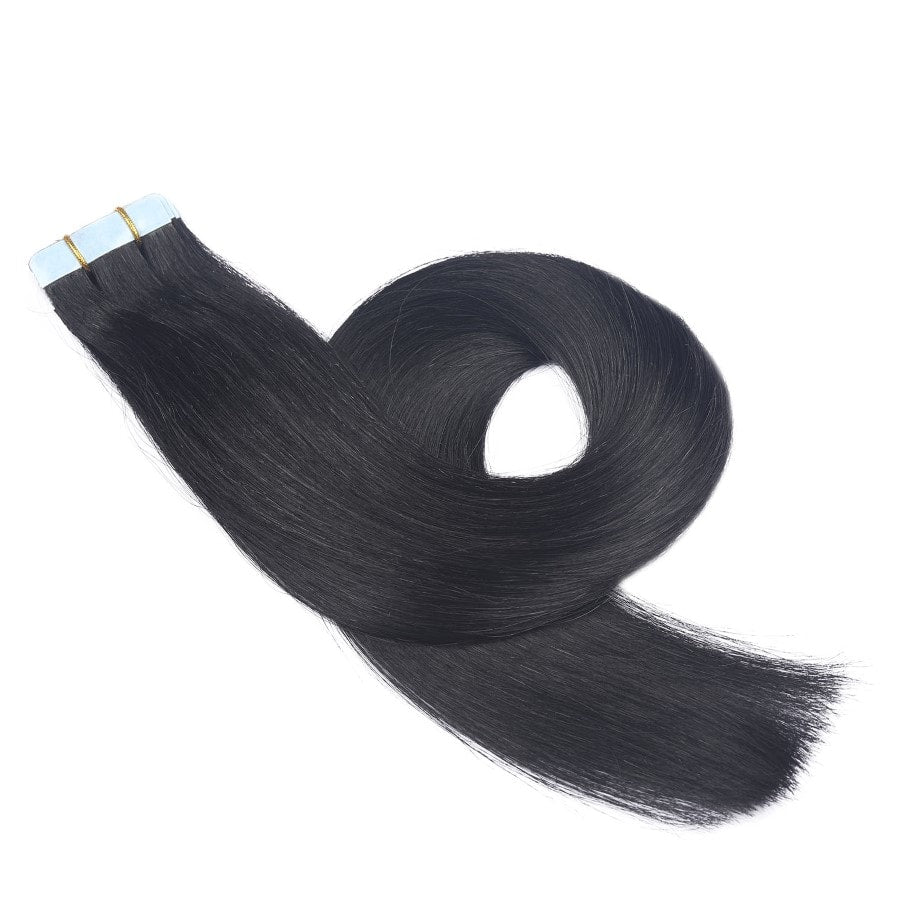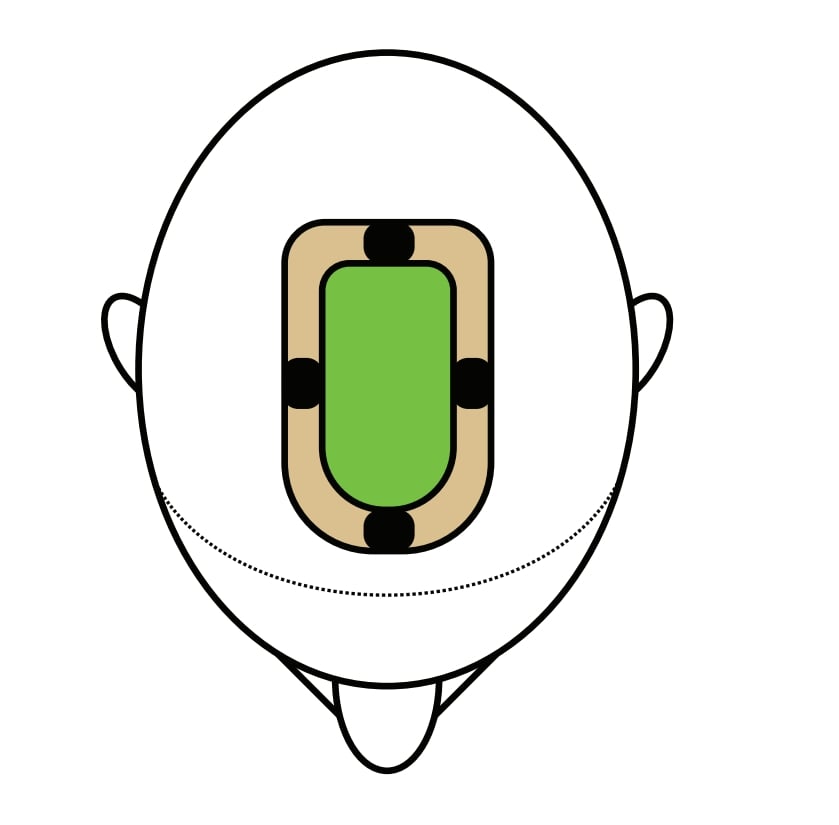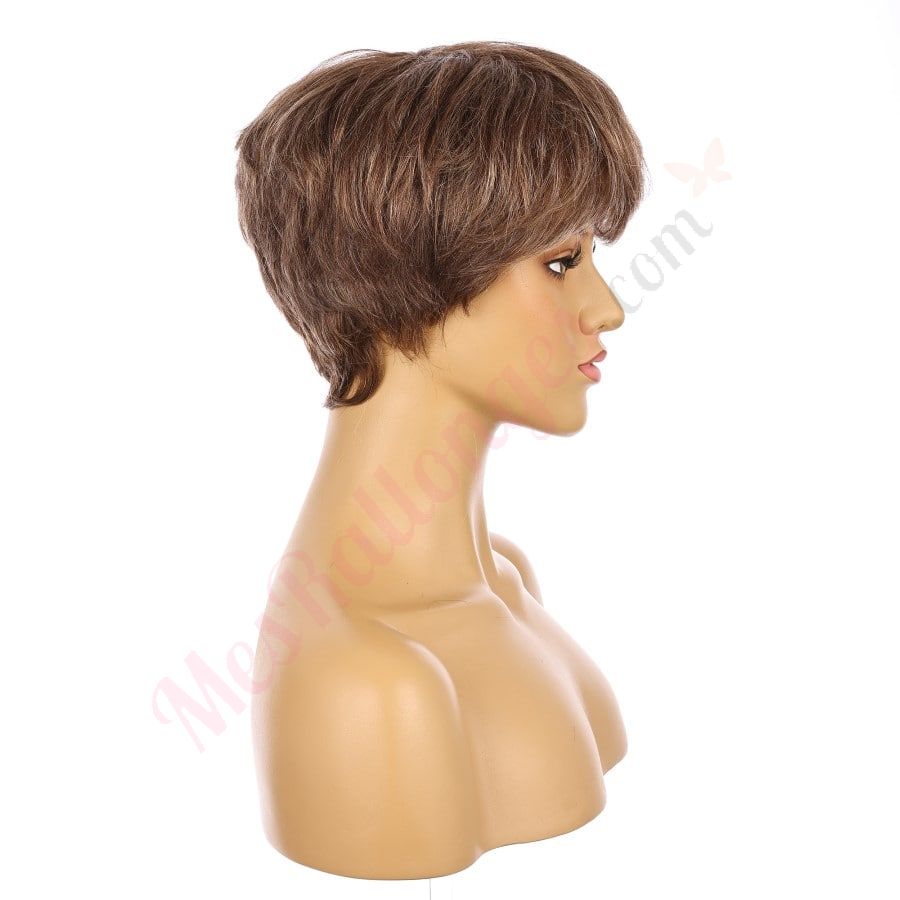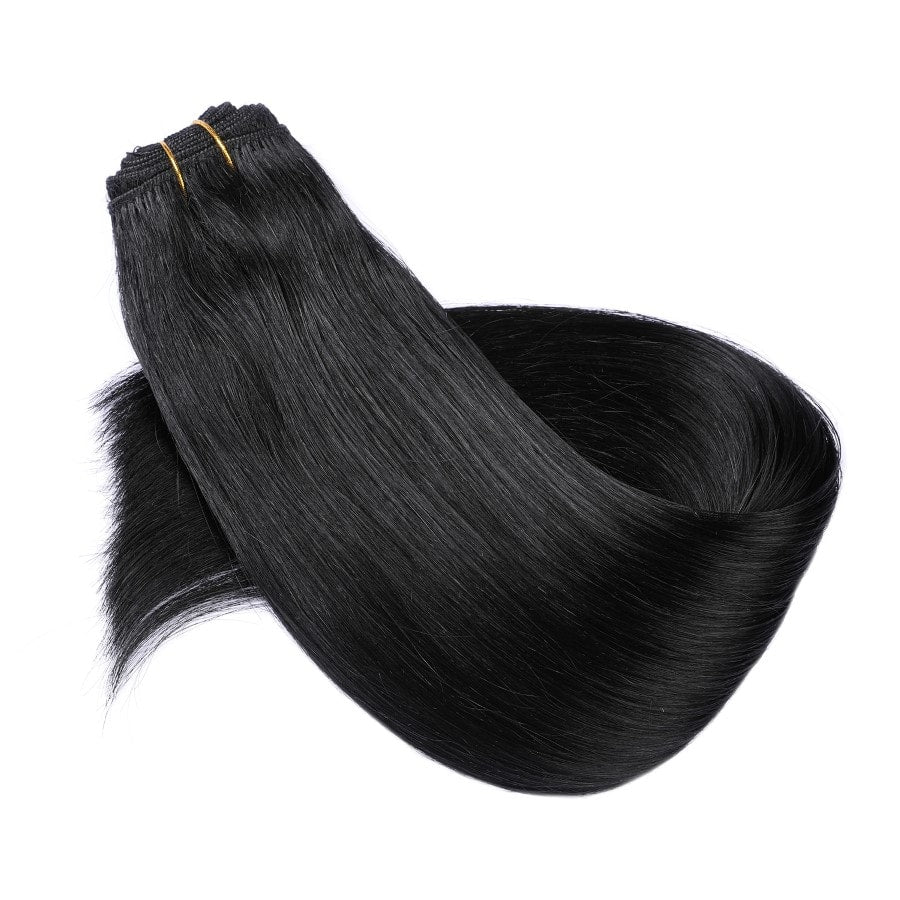Si vous avez remarqué que vos extensions de cheveux raccourcissent, vous n'êtes pas la seule. Il s'agit d'un problème courant qui laisse beaucoup d'entre nous perplexes. Les principales raisons sont perte naturelle des poils , entretien inadéquat et utilisation de produits de mauvaise qualité.
La perte naturelle de cheveux arrive à tout le monde et elle affecte également les extensions. Chaque jour, nous perdons entre 50 et 100 cheveux, ce qui signifie que nos extensions s'affinent au fil du temps. De plus, si nous ne les entretenons pas correctement, l'exposition à des éléments agressifs comme le chlore et l'eau salée peut les faire casser ou rétrécir.
En comprenant ces facteurs, nous pouvons prendre des mesures pour que nos extensions restent belles. Restez avec nous pour en savoir plus sur la façon de les entretenir et de veiller à ce qu'elles conservent leur longueur et leur beauté.
Principaux points à retenir
- Les extensions de cheveux raccourcissent en raison de la perte naturelle et d'un entretien inapproprié.
- Pratiques appropriées de soins capillaires peut empêcher les extensions de se casser ou de rétrécir.
- Des produits de qualité et des routines d’entretien sont essentiels pour la santé des extensions.
Comprendre les extensions de cheveux
Les extensions de cheveux sont un moyen formidable d'ajouter de la longueur, du volume et de la couleur à nos cheveux. Découvrons les différents types d'extensions de cheveux et la façon dont le cycle de croissance des cheveux les affecte.
Types d'extensions de cheveux
Il existe plusieurs types d'extensions de cheveux parmi lesquels nous pouvons choisir, chacun avec ses propres avantages et méthodes d'application.
Extensions à bandes adhésives : il s'agit de trames de cheveux pré-collées qui sont insérées entre des sections de nos cheveux naturels. Elles sont rapides à appliquer et se mélangent parfaitement.
Clips : Idéals pour une utilisation temporaire, les clips sont faciles à fixer et à retirer. Nous pouvons les utiliser pour des occasions spéciales ou pour changer de look instantanément.
Extensions par fusion (ou collées) : elles utilisent des mèches individuelles à pointe de kératine qui sont fusionnées à nos cheveux naturels à l'aide de la chaleur. Elles offrent une solution durable, qui dure généralement de trois à quatre mois.
Extensions de trame : Ces extensions se présentent sous forme de longues bandes et peuvent être cousues, collées ou perlées dans nos cheveux naturels. Elles offrent un volume important et peuvent être personnalisées.
Le cycle de croissance des cheveux
Notre cycle de croissance des cheveux joue un rôle crucial dans le comportement de nos extensions de cheveux au fil du temps.
Phases de croissance des cheveux : Il existe trois phases principales : Anagène (phase de croissance), Catagène (phase de transition) et Télogène (phase de repos). La plupart de nos cheveux sont en phase anagène.
Chute de cheveux : Il est naturel de perdre 50 à 100 cheveux par jour. Cette chute peut également affecter nos extensions si elles sont fixées sur les cheveux qui tombent.
Impact sur les extensions : Au fil du temps, à mesure que nos cheveux naturels poussent et tombent, nos extensions peuvent sembler plus courtes. Ce changement progressif est normal en raison du mouvement et de la perte de nos cheveux.
Connaître ces bases nous aide Prenez mieux soin de vos extensions de cheveux , en veillant à ce qu'elles restent belles plus longtemps.
Facteurs conduisant à des prolongations plus courtes
Les extensions de cheveux offrent un moyen incroyable de ajouter de la longueur et du volume à nos cheveux. Pourtant, beaucoup d'entre nous remarquent qu'ils raccourcissent au fil du temps. Examinons quelques raisons à l'origine de ce changement.
Perte de cheveux naturelle
Un facteur majeur est naturel Perte de cheveux . Tout comme nos vrais cheveux, les extensions perdent également des mèches quotidiennement. Chaque personne perd environ 50 à 100 cheveux par jour. Lorsque cela arrive à nos extensions, elles peuvent paraître plus fines et plus courtes.
De plus, certaines extensions peuvent ne pas être bien fixées. Par conséquent, elles peuvent perdre plus de mèches que d'habitude. Cela peut leur donner l'impression de rétrécir plus vite que prévu.
Dommages et casse
Dommages et bris contribuent également à des extensions plus courtes. L'utilisation d'outils de coiffure chauffants comme les lisseurs et les bigoudis peut provoquer dégâts causés par la chaleur aux fibres capillaires. Cela les rend cassantes et sujettes à la casse.
De plus, l'utilisation de produits chimiques agressifs dans les produits capillaires peut fragiliser les cheveux. Lorsque les extensions s'affaiblissent, elles se fendent et se cassent. Cela entraîne une perte de longueur au fil du temps.
Techniques de soins capillaires inappropriées
Soins inappropriés est une autre cause importante. Nous devons être doux avec nos extensions, en particulier lors du lavage et du brossage. Une manipulation brutale peut entraîner rupture et dommage .
Évitez de brosser les cheveux mouillés, car ils sont alors plus délicats. Utilisez un peigne à dents larges ou une brosse spéciale pour extensions. De plus, l'utilisation de produits capillaires contenant des produits chimiques puissants peut affecter la longévité des extensions.
Influences environnementales
Facteurs environnementaux jouent également un rôle. L'exposition au soleil, au vent et à l'humidité peut dessécher extensions de cheveux , les rendant plus fragiles. Dégâts causés par la chaleur L'exposition au soleil peut les fragiliser et les rendre sujets à la casse.
Nager dans des piscines chlorées et dans l'eau salée de l'océan peut priver les cheveux de leurs huiles naturelles. Cela rend les extensions sèches et cassantes, ce qui entraîne davantage de chutes et de cassures.
Prenons de grands soins de nos jolies extensions de cheveux pour les garder fabuleuses et durables !
Conseils d'entretien pour les extensions de cheveux
Pour que nos extensions de cheveux restent belles et durent plus longtemps, entretien régulier , soins à domicile appropriés et style soigné sont essentiels. Plongeons dans ces conseils essentiels !
Entretien régulier et visites au salon
Un entretien régulier est essentiel pour garder les extensions de cheveux en parfait état. Il est nécessaire de planifier des visites au salon toutes les 6 à 8 semaines. Lors de ces rendez-vous, notre styliste vous ajuster les extensions au fur et à mesure que nos cheveux naturels poussent. Cela comprend le fait de « soulever » et de rattacher les extensions si nous utilisons des rangées de perles naturelles.
De plus, il est important d'obtenir coupes régulières . Cela permet de garder les pointes en bonne santé et d'éviter que les pointes fourchues n'endommagent les extensions. Nos stylistes peuvent également vérifier tout signe d'emmêlement ou de dommage lors de ces visites. Le respect de ces rendez-vous permet de maintenir une look sans couture !
Stratégies de soins capillaires à domicile
Pour les soins à domicile, il est essentiel d'utiliser des shampoings et des après-shampoings doux. Il faut privilégier les produits sans sulfates ni alcool, qui peuvent dépouiller les cheveux de leurs huiles naturelles. Lors du lavage, mieux vaut être doux et éviter de frotter trop fort au niveau des racines. Il faut plutôt se concentrer sur les longueurs et les pointes des extensions.
Le brossage est un autre élément clé de l'entretien. L'utilisation d'un peigne à dents larges ou d'une brosse à poils souples permet d'éviter de tirer et de casser les cheveux. Commencez toujours le brossage par les pointes et remontez jusqu'aux racines, en tenant les cheveux à la racine pour éviter de mettre de la tension sur les liens ou les bandes.
Les masques capillaires et les huiles naturelles peuvent apporter une hydratation et une nutrition supplémentaires. Appliquer un masque capillaire hydratant une fois par semaine permet de garder les extensions douces et brillantes. Les huiles naturelles comme l'huile d'argan ou de coco peuvent être utilisées avec parcimonie sur les pointes pour éviter le dessèchement.
Style et maniabilité appropriés
En matière de coiffure, nous devons manipuler nos extensions avec soin. Limiter l'utilisation d'outils chauffants comme les fers plats et les fers à friser peut réduire les dommages. Si nous devons utiliser de la chaleur, il est indispensable d'appliquer au préalable un spray protecteur de chaleur.
Tresser nos cheveux la nuit peut éviter qu'ils s'emmêlent et se cassent pendant notre sommeil. Les tresses lâches permettent de garder les extensions organisées et de réduire la tension sur les cheveux. Il est également bénéfique d'éviter les coiffures serrées qui tirent sur les racines.
Enfin, évitez de tirer ou de tirer trop fort lorsque vous coiffez ou démêlez vos cheveux. En faisant preuve de douceur et en prenant votre temps, vous contribuerez à maintenir les liens ou les bandes, ce qui permettra à vos extensions de cheveux de rester belles plus longtemps.
En suivant ces conseils, nos extensions de cheveux resteront belles et saines !
Promouvoir la santé des extensions de cheveux
Il est essentiel de prendre soin de nos extensions de cheveux pour maintenir leur longueur et leur santé. Découvrons quelques conseils pratiques sur la nutrition et sur la façon d'éviter les pratiques néfastes pour que nos extensions restent fabuleuses.
Nutrition et santé des cheveux
Pour garder nos extensions de cheveux en parfait état, nous devons prêter une attention particulière à notre alimentation globale. Des cheveux sains commencent de l'intérieur vers l'extérieur. alimentation équilibrée riche en vitamines et minéraux veille à ce que nos cheveux naturels et nos extensions soient à leur meilleur.
Nutriments clés inclure:
- Vitamines : Biotine (Vitamine B7), Vitamine A et Vitamine E .
- Minéraux : Zinc , Fer et Magnésium .
- Suppléments : Pensez à un multivitamin pour la santé des cheveux si notre alimentation manque de nutriments essentiels.
Nous devrions incorporer des aliments comme œufs, noix, légumes-feuilles et poisson dans nos repas. Rester hydraté est également cruciale, car l’eau aide à l’absorption des nutriments et maintient nos cheveux hydratés.
Éviter les pratiques néfastes
Éviter les pratiques néfastes peut prolonger considérablement la durée de vie de nos extensions de cheveux. Coiffage à chaud et traitements chimiques peut causer des dommages et raccourcir la durée de vie de nos extensions. L'utilisation outils de coiffage chauffants comme les fers à friser et les lisseurs, une utilisation parcimonieuse permet de minimiser ce risque.
Lors de l'utilisation de la chaleur :
- Appliquez toujours un protecteur thermique .
- Utilisez le réglage de température le plus bas qui convient à nos cheveux.
Éviter les coiffures serrées est également important. Les chignons serrés, les queues de cheval ou les tresses peuvent exercer une pression sur nos cheveux et entraîner alopécie de traction . Optez plutôt pour styles plus amples et coiffures protectrices .
En plus:
- Évitez de dormir avec des extensions mouillées.
- Attachez vos cheveux en une tresse lâche ou une queue de cheval avant de vous coucher pour éviter qu'ils ne s'emmêlent.
Grâce à ces pratiques, nous pouvons maintenir la santé et la longueur de nos belles extensions de cheveux.
Les extensions et vos cheveux naturels
Il est essentiel de veiller à ce que nos extensions soient belles tout en gardant nos cheveux naturels en bonne santé. Nous devrions nous concentrer sur techniques de mélange et prévention des dommages pour maintenir notre apparence désirée.
Mélanger les extensions avec les cheveux naturels
Lorsque nous mélangeons des extensions avec nos cheveux naturels, il est essentiel de faire correspondre la texture et la couleur. Cela donne à tout un aspect sans couture et naturel . En utilisant extensions de haute qualité Il est essentiel de choisir des extensions qui correspondent à la texture de nos cheveux. Par exemple, si nous avons les cheveux bouclés, nous devrions choisir des extensions bouclées.
Des coupes régulières permettent d'éviter les pointes fourchues et de garder nos extensions fraîches. Utiliser avec parcimonie des outils chauffants comme des fers à lisser, des fers à friser et des sèche-cheveux peut garder nos cheveux naturels et nos extensions en bonne santé. Le coiffage à chaud peut provoquer des cassures et affaiblir le follicule pileux, c'est pourquoi il est judicieux d'utiliser un spray protecteur de chaleur.
Il est également important de bien mélanger les extensions sans provoquer de tiraillements inutiles. Une manipulation délicate permet d'éviter la chute des cheveux et de maintenir nos cheveux naturels et nos extensions dans un état optimal.
Prévenir les dommages causés aux cheveux naturels
Pour protéger nos cheveux naturels tout en portant des extensions, il faut adopter des habitudes capillaires saines. Éviter l'utilisation excessive d'outils de coiffure chauffants comme les fers à lisser et à friser peut prévenir les dommages aux cheveux. Si nous devons utiliser ces outils, les régler à une température plus basse permet de minimiser les dommages.
Hydrater régulièrement nos cheveux peut les empêcher de devenir secs et cassants. L'utilisation de shampooings et d'après-shampooings hydratants conçus pour les cheveux avec extensions permet de maintenir l'équilibre hydrique.
Utiliser une taie d'oreiller en soie peut être incroyablement bénéfique. La soie réduit les frottements pendant notre sommeil, ce qui aide à prévenir la casse des cheveux. Il est également conseillé d'éviter de tresser nos cheveux trop serrés avec des extensions, car cela peut exercer une pression sur le follicule pileux et entraîner une perte de cheveux par plaques.
En suivant ces étapes, nous pouvons garder nos cheveux naturels forts et sains tout en profitant de la longueur et du volume supplémentaires des extensions.
Gérer les attentes

Investir dans des extensions de cheveux peut être passionnant, mais comprendre la durée de vie et l'importance de la qualité nous aidera à en profiter plus longtemps. Découvrons ce que nous devons savoir.
Durée de vie des extensions de cheveux
Les extensions de cheveux, comme les extensions à bande adhésive, ont une durée de vie naturelle . Ils peuvent durer entre 2 et 6 mois Cela dépend de plusieurs facteurs tels que le type de cheveux, la fréquence à laquelle nous les portons et les soins que nous leur apportons.
Avec utilisation quotidienne , nous pourrions remarquer des changements dans leur apparence , volume , et plénitude . Cela se produit en raison de perte naturelle de cheveux . Nos cheveux perdent environ 50 à 100 cheveux chaque jour, et il en va de même pour les extensions.
Un entretien approprié peut aider prolonger leur vie . Évitons excès de chlore , l'eau salée et la lumière directe du soleil, car ces facteurs peuvent endommager ou décolorer la couleur.
Investissement dans des extensions de qualité
Investir dans des extensions de haute qualité est crucial. Les extensions de qualité proviennent souvent de fournisseurs réputés et utilisez des cheveux de qualité supérieure, qui semblent plus naturels et durent plus longtemps.
Avec extensions de qualité , nous maintenons notre style, notre motif de boucles et texture des cheveux s'améliorent avec le temps. Les extensions de qualité inférieure peuvent être moins chères au départ, mais peuvent s'user plus rapidement, ce qui nécessite des remplacements fréquents.
N'oublions pas que notre génétique et changements hormonaux peut affecter le comportement de nos extensions. Choisir des extensions bien conçues signifie qu'elles sont mieux équipées pour gérer ces changements naturels. Investir dans la qualité peut sembler plus cher au départ, mais cela nous permet généralement d'économiser de l'argent et des tracas à long terme.
Consultation d'experts

Lorsque vous remarquez que vos extensions de cheveux raccourcissent, une consultation avec un expert peut vous apporter des informations essentielles. Les professionnels peuvent déterminer la cause et proposer des solutions sur mesure pour maintenir la longueur et la santé de vos extensions.
Quand consulter un professionnel
Consulter un professionnel est crucial si vous constatez une diminution significative de la longueur de vos extensions de cheveux.
Stylistes et dermatologues sont essentiels pour diagnostiquer les problèmes. Ils peuvent identifier des problèmes tels que perte naturelle des poils ou des dommages causés par des outils de coiffure.
Visiter un salon nous permet d'accéder à soins professionnels . Les experts peuvent recommander des traitements ou des produits pour éviter un raccourcissement supplémentaire. conditions médicales comme l'alopécie ou le stress y contribuent, un dermatologue peut suggérer des traitements, notamment minoxidil .
Des solutions personnalisées pour des besoins individuels
Les cheveux de chaque individu sont uniques, tout comme les solutions pour entretenir les extensions.
Solutions personnalisées peut impliquer d'ajuster le type, la longueur ou le style des extensions. Nous pourrions avoir besoin de routines de soins spéciales adaptées à notre style de vie. styliste peut nous guider à travers différentes options pour garantir que nos extensions répondent parfaitement à nos besoins.
Pour les personnes souffrant de problèmes capillaires liés au vieillissement ou au stress, des experts peuvent élaborer des plans de soins personnalisés. Cela peut inclure des shampooings spéciaux, des après-shampooings et des contrôles réguliers pour garantir que nos cheveux et nos extensions restent en parfait état.
Questions fréquemment posées
Nous sommes là pour vous aider à conserver vos extensions de cheveux en parfait état le plus longtemps possible. Découvrons ensemble quelques conseils et idées clés.
Comment puis-je éviter que mes extensions de cheveux ne se dessèchent et ne deviennent crépues ?
À Pour éviter la sécheresse et les frisottis , utilisez un shampooing et un après-shampooing sans sulfate. Appliquez un soin en profondeur une fois par semaine pour garder vos cheveux hydratés. Évitez d'utiliser trop souvent des appareils chauffants et protégez vos cheveux de la chaleur avec un protecteur thermique.
Quels sont les signes indiquant que mes extensions de cheveux pourraient être de mauvaise qualité ?
Les extensions de cheveux de mauvaise qualité peuvent présenter des signes tels qu'une perte excessive, des nœuds ou une différence notable de texture par rapport à vos cheveux naturels. Elles peuvent également être inconfortables à porter, provoquant des démangeaisons ou des rougeurs sur ton cuir chevelu.
À quelle fréquence dois-je laver mes extensions de cheveux humains pour un entretien optimal ?
Lavez vos extensions de cheveux naturels toutes les 1 à 2 semaines, en fonction de la quantité de produit que vous utilisez et de votre niveau d'activité. Utilisez un shampooing doux sans sulfate et appliquez ensuite un après-shampooing hydratant. Démêlez toujours vos extensions avant de les laver pour éviter qu'elles ne s'emmêlent.
Quelles sont les meilleures pratiques pour entretenir la longueur de mes extensions de cheveux ?
Pour garder vos extensions de cheveux longues et saines, brossez-les doucement avec un peigne à dents larges ou une brosse spéciale extensions. Dormez sur une taie d'oreiller en soie ou en satin pour réduire les frottements. Coupez régulièrement vos extensions pour éviter les pointes fourchues.
Pouvez-vous expliquer pourquoi mes cheveux semblent plus fins après avoir retiré les extensions ?
Nos cheveux naturels peuvent sembler plus fins après avoir retiré les extensions, car certains cheveux peuvent tomber en même temps que les extensions. Il est également possible que vous vous soyez habituée au volume et à la longueur supplémentaires, ce qui fait que vos cheveux naturels semblent plus fins en comparaison.
Que dois-je faire en premier pour m’assurer que mes nouvelles extensions de cheveux restent saines et longues ?
Commencez par choisir des extensions de cheveux de haute qualité et faites-les installer par un professionnel. Suivez toutes les instructions d'entretien, notamment en utilisant les bons produits et en évitant la chaleur excessive. Des rendez-vous d'entretien réguliers aideront également à garder vos extensions en parfait état.

